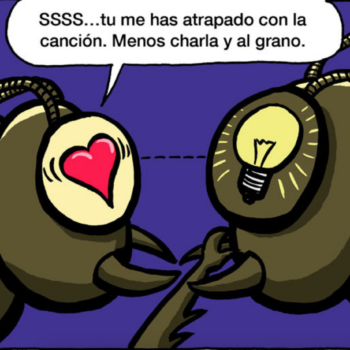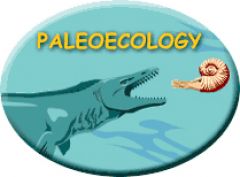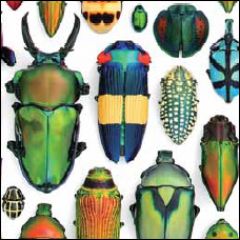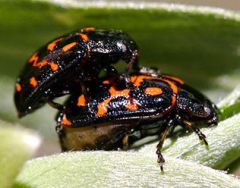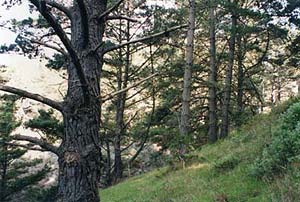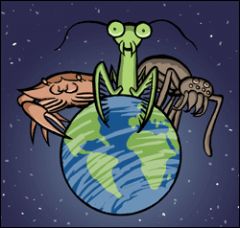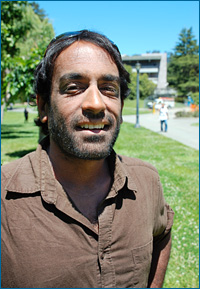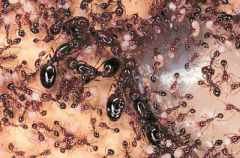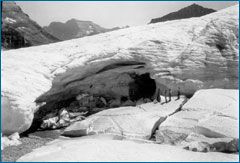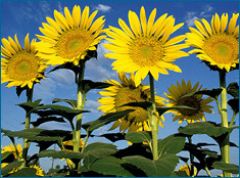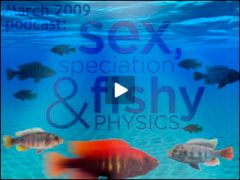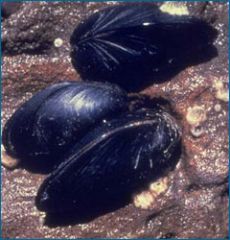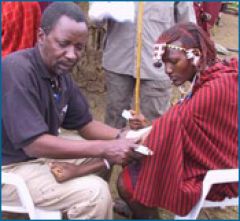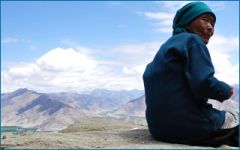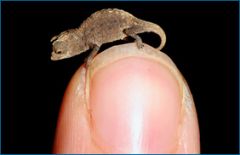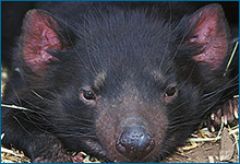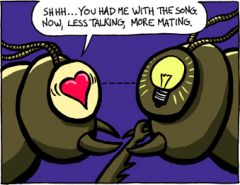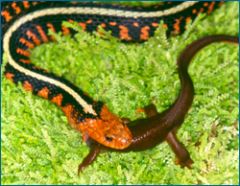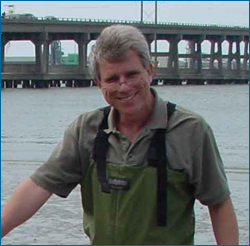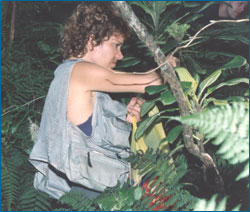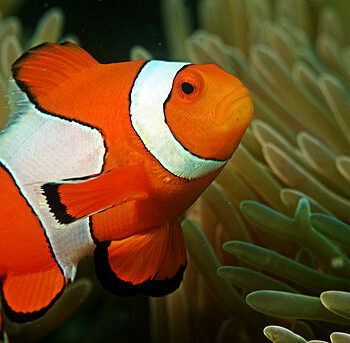Search by:
Found 30 resources:
La Supervivencia del más Astuto
Grade Level(s):
- 6-8
- 9-12
Source:
- UC Museum of Paleontology
Resource type:
- Comic
Time: 10 minutes
Overview
Este cómic nos habla de los esfuerzos de un grillo macho para atraer a una pareja. Y en el proceso, revela (destruye) algunos típicos malentendidos sobre lo que significa estar evolutivamente “adaptado”.
Stories from the Fossil Record
Grade Level(s):
- 6-8
- 9-12
Source:
- UC Museum of Paleontology
Resource type:
- Online activity or lab
Time: One to two class periods
Overview
This web-based module provides students with a basic understanding of how fossils can be used to interpret the past.
Radiations and extinctions: Biodiversity through the ages
Grade Level(s):
- 13-16
Source:
- Zimmer, Carl
Resource type:
- Article
Time: 1.5 hours
Overview
This excerpted chapter from Carl Zimmer's book, The Tangled Bank, describes the evolutionary processes responsible for large scale patterns in the diversity of life through time. Reprinted with the permission of Roberts and Company Publishers, Inc.
This resource is available from the National Center for Science Education.
Natural selection from the gene up: The work of Elizabeth Dahlhoff and Nathan Rank
Grade Level(s):
- 9-12
- 13-16
Source:
- UC Museum of Paleontology
Resource type:
- Research profile
Time: 30 minutes
Overview
Find out how we investigate evolutionary adaptations by following two scientists and their team as they figure out how the willow leaf beetle survives in different climates.
Monkey opsins
Grade Level(s):
- 13-16
Source:
- Evo-Ed
Resource type:
- Case study
Time: Two class periods
Overview
This case study in the form of a set of PowerPoint slides examines the evolution of trichromatic vision in old world monkeys.
The Monterey Pine through geologic time
Grade Level(s):
- 9-12
Source:
- Perry, Frank
Resource type:
- Article
Time: 30 minutes
Overview
Understanding the evolutionary history of the Monterey Pine may help us conserve this species.
The Making of the Fittest: The Birth and Death of Genes
Grade Level(s):
- 6-8
- 9-12
- 13-16
Source:
- Howard Hughes Medical Institute
Resource type:
- Video
Time: 15-20 minutes
Overview
This 13-minute film describes how scientists have pieced together the evolutionary history of the Antarctic icefish by studying its genome – an excellent case study for genetic evolution as both the gain and loss of genes have led to key adaptations.
The Making of the Fittest: Natural Selection in Humans
Grade Level(s):
- 9-12
- 13-16
Source:
- Howard Hughes Medical Institute
Resource type:
- Video
Time: 15-30 minutes
Overview
This 14-minute film describes the connection between the infectious parasitic disease malaria and the genetic disease sickle cell anemia - one of the best-understood examples of natural selection in humans.
Mantis shrimp shoulder their evolutionary baggage and bluff
Grade Level(s):
- 6-8
- 9-12
- 13-16
Source:
- UC Museum of Paleontology
Resource type:
- Article
Time: 30 minutes
Overview
Like all organisms, mantis shrimp carry baggage from their evolutionary history. Find out how this baggage has coaxed them into a deadly bluffing game.
It takes teamwork: How endosymbiosis changed life on Earth
Grade Level(s):
- 9-12
- 13-16
Source:
- UC Museum of Paleontology
Resource type:
- Article
Time: 30-40 minutes
Overview
You might be surprised to learn that descendants of an ancient bacterium are living in every cell of your body! Find out how endosymbiosis factored into the evolution of your own cells and learn about a modern example of this process.
Interactive investigation: The arthropod story
Grade Level(s):
- 6-8
- 9-12
Source:
- UC Museum of Paleontology
Resource type:
- Online activity or lab
Time: 3-4 class periods
Overview
This interactive investigation delves into the amazing world of the arthropods and examines their success and their evolutionary constraints.
High altitude adaptations: The work of Emilia Huerta-Sánchez
Grade Level(s):
- 13-16
Source:
- UC Museum of Paleontology
Resource type:
- Research profile
Time: 30 minutes
Overview
This research profile follows statistician and population geneticist Emilia Huerta-Sánchez as she studies the adaptations that allow Tibetan highlanders to live 13,000 feet above sea level without developing altitude sickness.
Using trees to uproot HIV: The work of Satish Pillai
Grade Level(s):
- 9-12
- 13-16
Source:
- UC Museum of Paleontology
Resource type:
- Research profile
Time: 30 minutes
Overview
This research profile follows scientist Satish Pillai as he studies the evolution of HIV within infected individuals. His research uses the tools of phylogenetics to investigate vaccine development and the possibility of curing the disease.
Fire ants invade and evolve
Grade Level(s):
- 9-12
- 13-16
Source:
- UC Museum of Paleontology
Resource type:
- Article
Time: 40 minutes
Overview
Understanding the evolution of fire ants may help scientists control the spread of these pests, which have already taken over much of the U.S.
Evo in the news: Warming to evolution
Grade Level(s):
- 9-12
- 13-16
Source:
- UC Museum of Paleontology
Resource type:
- Evo in the News article
Time: 15 minutes
Overview
Global warming increasingly affects many aspects of our environment, from the sea level to tropical storm strength. But that's far from the full story. This news brief from July 2006 describes how global warming has already begun to affect the evolution of several species on Earth.
Evo in the news: The other green (r)evolution
Grade Level(s):
- 9-12
- 13-16
Source:
- UC Museum of Paleontology
Resource type:
- Evo in the News article
Time: 20 minutes
Overview
Though corn is "all-natural" in some ways, in others it is entirely manmade. This news brief from February 2007 explains the evolutionary tools that ancient humans used to engineer modern corn and the tools that scientists are using today to reconstruct corn's evolutionary history.
Evo in the news: Sex, speciation, and fishy physics
Grade Level(s):
- 9-12
- 13-16
Source:
- UC Museum of Paleontology
Resource type:
- Evo in the News article
Time: 20 minutes
Overview
More than 500 species of cichlid fish inhabit Africa's Lake Victoria. This news brief from March 2009 explains new research suggesting that the physics of light may have played an important role in cichlid diversification and in the recent drop in their diversity.
Evo in the news: Musseling in on evolution
Grade Level(s):
- 9-12
- 13-16
Source:
- UC Museum of Paleontology
Resource type:
- Evo in the News article
Time: 15 minutes
Overview
This news brief, from September 2006, reviews a recent case of evolution in action. In just 15 years, mussels have evolved in response to an invasive crab species. Find out how biologists uncovered this example of evolution on double time.
Evo in the news: Got lactase?
Grade Level(s):
- 9-12
- 13-16
Source:
- UC Museum of Paleontology
Resource type:
- Evo in the News article
Time: 20 minutes
Overview
The ability to digest milk is a recent evolutionary innovation that has spread through some human populations. This news brief from April 2007 describes how evolution has allowed different human populations to take advantage of the nutritional possibilities of dairying and links evolution with the prevalence of lactose tolerance among people of different ethnicities.
Evo in the news: Evolving altitude aptitude
Grade Level(s):
- 9-12
- 13-16
Source:
- UC Museum of Paleontology
Resource type:
- Evo in the News article
Time: 10 minutes
Overview
This news brief from October 2010 examines new research that makes it clear that Tibetan highlanders have not just acclimated to their mountain home; evolutionary adaptations have equipped them with unique physiological mechanisms for dealing with low oxygen levels.
Evo in the News: Evolutionary history in a tiny package
Grade Level(s):
- 9-12
- 13-16
Source:
- UC Museum of Paleontology
Resource type:
- Evo in the News article
Time: 20 minutes
Overview
This news brief, from March 2012, describes the discovery four new species — all miniature chameleons — and explores the concept of island dwarfism.
Evo in the news: Evolution down under
Grade Level(s):
- 9-12
- 13-16
Source:
- UC Museum of Paleontology
Resource type:
- Evo in the News article
Time: 20 minutes
Overview
This news brief, from September of 2008, describes an unusual contagious cancer currently decimating Tasmanian devil populations. Learn about the fascinating interplay between the evolution of the devils and the evolution of the disease.
Comic strip: Survival of the sneakiest
Grade Level(s):
- 6-8
- 9-12
Source:
- UC Museum of Paleontology
Resource type:
- Comic
Time: 10 minutes
Overview
This comic follows the efforts of a male cricket as he tries to attract a mate, and in the process, debunks common myths about what it means to be evolutionarily "fit."
Biological warfare and the coevolutionary arms race
Grade Level(s):
- 9-12
- 13-16
Source:
- UC Museum of Paleontology
Resource type:
- Article
Time: 45 minutes
Overview
The rough-skinned newt looks harmless enough but is, in fact, packed full of one of the most potent neurotoxins known to man. Find out how an evolutionary arms race has pushed these mild-mannered critters to the extremes of toxicity and how evolutionary biologists have unraveled their fascinating story.
Angling for evolutionary answers: The work of David O. Conover
Grade Level(s):
- 9-12
- 13-16
Source:
- UC Museum of Paleontology
Resource type:
- Research profile
Time: 30 minutes
Overview
Human activity has certainly affected our physical environment - but it is also changing the course of evolution. This research profile follows scientist David O. Conover as he investigates the impact of our fishing practices on fish evolution and discovers what happened to the big ones that got away.
Aloha, spider style! The work of Rosemary Gillespie
Grade Level(s):
- 9-12
- 13-16
Source:
- UC Museum of Paleontology
Resource type:
- Research profile
Time: one class period
Overview
This research profile follows Dr. Rosemary Gillespie to Hawaii as she evaluates hypotheses about the evolution of the colorful happy-face spider.
Adaptation: The case of penguins
Grade Level(s):
- 9-12
Source:
- Visionlearning
Resource type:
- Article
Time: 20 minutes
Overview
The process of natural selection produces stunning adaptations. Learn about the history of this concept, while you explore the incredible adaptations that penguins have evolved, allowing them to survive and reproduce in a climate that reaches -60°C!
This article appears at Visionlearning.
Webcast: Selection in action
Grade Level(s):
- 9-12
- 13-16
Source:
- Howard Hughes Medical Institute
Resource type:
- Video Lecture
Time: 60 minutes
Overview
In lecture two of a four part series, evolutionary biologist David Kingsley discusses how just a few small genetic changes can have a big effect on morphology, using examples from maize, dog breeding, and stickleback fish.
This lecture is available from Howard Hughes' BioInteractive website.
A fisheye view of the tree of life
Grade Level(s):
- 9-12
- 13-16
Source:
- UC Museum of Paleontology
Resource type:
- Interactive
Overview
This interactive phylogeny of the ray-finned fishes lets users dynamically explore the evolution of fish traits, as well as read stories about the evolution of unusual characteristics such as bioluminescence and venom.
Sexo, especiación y física subacuática
Grade Level(s):
- 9-12
- 13-16
Source:
- UC Museum of Paleontology
Resource type:
- Evo in the News article
Time: 20 minutes
Overview
Evolución en las noticias relata una reciente historia que señala como comprender física básica puede revelar como la evolución esta ocurriendo hoy — en especial, como la física de la luz tiene influencia sobre la selección sexual, especiación y el colapso de la biodiversidad, producto de la polución causada por los humanos...

